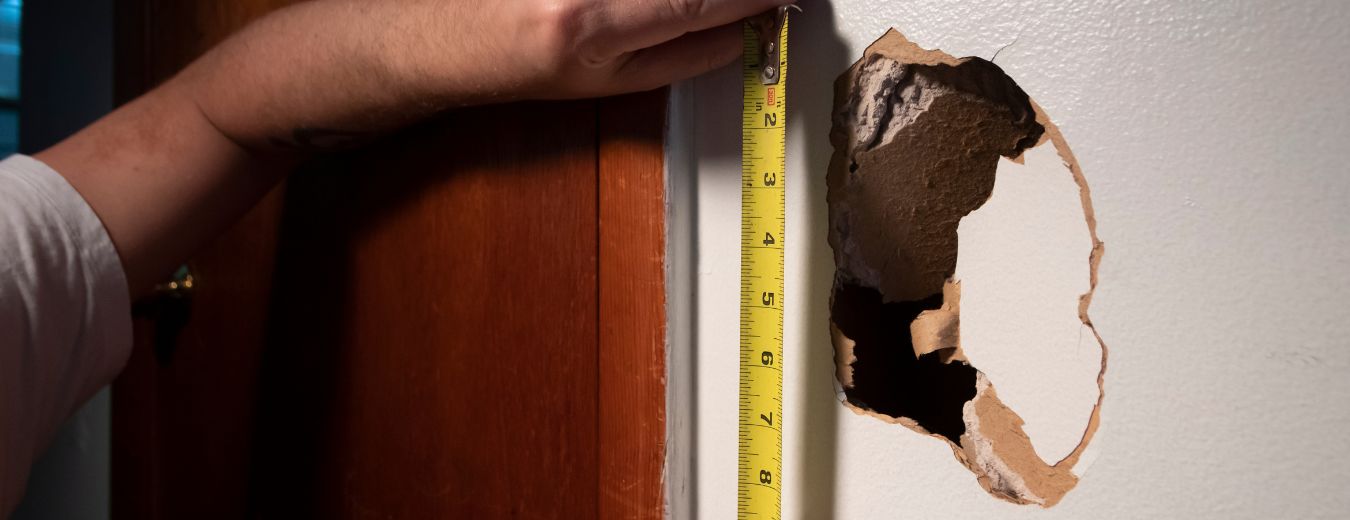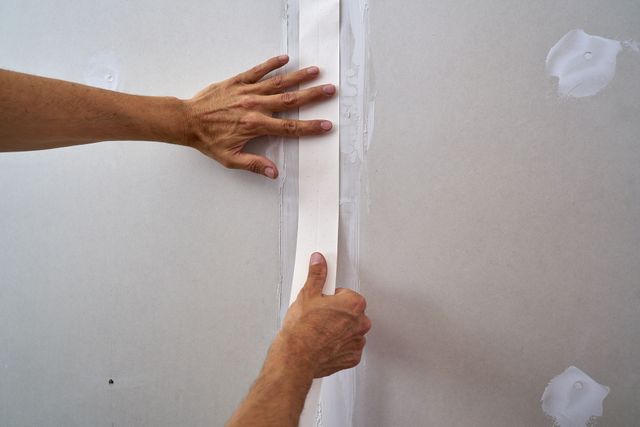Step-by-Step Approaches to Achieving Flawless Drywall Repair Work and Installment
Achieving perfect drywall fixing and installation requires a systematic strategy. It involves understanding the different kinds of drywall and the devices necessary for the job. Correct location preparation is vital prior to beginning any type of work. Drywall Repair Ogden UT. Each step, from covering holes to installing brand-new sheets, demands interest to information. The procedure does not end with installation; finishing techniques are vital for a sleek appearance. The following steps will ensure a smooth result, but exactly what do they require?
Comprehending Drywall Types and Equipment Needed

The setup devices are equally important. An utility knife is important for cutting drywall sheets, while a drywall saw can help in making precise cuts for outlets or fixtures. T-squares assure exact measurements, and drywall screws or nails protect the panels to wall surface studs. In addition, a drywall lift can help with the setup of big sheets, reducing physical strain. Familiarity with these devices and types appreciably contributes to the effectiveness and quality of drywall projects.
Preparing the Location for Fixing or Setup
Preparing the area for drywall repair work or installment is important to ensure a efficient and smooth process. First, the surrounding space must be removed of furnishings and other obstacles to offer enough working area. This not only ensures safety however likewise stops damages to items. Next off, it is necessary to cover the flooring with ground cloth to catch any kind of debris or dirt created during the job.
Additionally, the walls ought to be evaluated for any loose paint or wallpaper that might hinder adhesion. Removing these elements develops a tidy surface area for the new drywall. Prior to start, it is recommended to switch off power to electric outlets or fixtures in the vicinity. Guaranteeing sufficient lights in the work area will better boost visibility and emphasis during the repair work or installation process. Interior Painting. By diligently preparing the area, one lays the groundwork for an effective drywall job
Step-by-Step Process for Patching Holes

Covering openings in drywall requires a methodical approach to assure a seamless repair service. The primary step involves evaluating the dimension of the opening. For little openings, a patching substance might be enough, while bigger openings require a spot. Next off, the damaged area should be cleaned up and prepared by getting rid of any loosened debris.
For small holes, using spackling substance with a putty knife is advised, smoothing it over the hole and feathering the edges. When completely dry, fining sand the location assures a smooth finish. For larger holes, a drywall patch should be reduced to dimension, placed over the opening, and secured with screws. After mounting the spot, the same spackling procedure is repeated, complied with by fining sand.
Finally, the patched location visit this site right here must be topped and repainted to match the surrounding wall. This careful procedure ensures a specialist appearance and prolongs the life-span of the repair service.
Setting Up New Drywall Sheets: A Comprehensive Overview
Setting up brand-new drywall sheets calls for mindful planning and implementation to guarantee a aesthetically appealing and strong coating. The area needs to be measured properly to determine the number of sheets required. It is important to choose the best density, typically 1/2-inch for interior walls and 5/8-inch for ceilings or fire-rated applications.
Next, the studs or framework need to be inspected for any irregularities, making certain they are straightened and appropriately spaced. When putting the drywall sheets, they must be placed horizontally to reduce seams and improve structural stability. A drywall lift can be beneficial for overhead installments.
Securing the sheets with drywall screws at ideal intervals makes sure a protected installment. It is very important to countersink the screws a little listed below the surface area to prepare for the ending up process. Following these guidelines will certainly result in a solid structure, all set for the next action in drywall ending up.
Finishing Touches: Taping, Mudding, and Fining Sand Methods
As soon as the drywall sheets are securely attached, the emphasis shifts to the complements that will certainly provide a polished look. This process starts with taping, making use of either paper or fiberglass fit together tape to cover the joints in between sheets. The tape guarantees a smooth change, reducing the threat of fracturing. Following taping, mudding is important; a joint substance is applied over the tape to fill spaces and produce a smooth surface area. Usually, several coats are required, every click over here now one feathery out further than the previous to reduce visibility.
After sufficient drying out time, sanding is the last action in achieving a perfect coating. A fine-grit sandpaper is used to smooth the dried compound, ensuring there are no bumps or flaws. Interest to detail during this stage is significant, as it substantially affects the total look of the wall. The end outcome must be an also, professional-looking surface area prepared for priming and paint.
Frequently Asked Questions
How Do I Choose the Right Drywall Thickness for My Job?
To select the best drywall density, think about the project's purpose, area, and architectural requirements. Standard densities include 1/2-inch for general usage and 5/8-inch for fire-rated applications, making sure toughness and conformity with structure codes.

Can I Mount Drywall Over Existing Drywall?
Yes, setting up drywall over existing drywall is feasible. However, it is crucial to guarantee the underlying surface area is safe and cost-free from damages. Appropriate attachment and his explanation factor to consider of thickness are necessary for an effective installation.
What Are the Best Practices for Drywall Disposal?
The most effective practices for drywall disposal include reusing when feasible, utilizing neighborhood waste management solutions, and complying with standards for dangerous products if appropriate. Interior Painting. Correctly securing and classifying waste warranties compliance and safety during disposal
Exactly how Lengthy Should I Await Mud to Dry Before Sanding?
Usually, one should wait 24 hours for drywall mud to completely dry prior to fining sand. Drying out time can differ based on moisture and temperature, so examining for a company structure is recommended before proceeding.
Are There Eco-Friendly Drywall Options Available?
Yes, eco-friendly drywall alternatives are available. These alternatives frequently make use of recycled products, low-VOC adhesives, and lasting manufacturing approaches, minimizing environmental effect while offering efficient insulation and durability for numerous building and construction and remodelling jobs.
An energy knife is crucial for cutting drywall sheets, while a drywall saw can aid in making specific cuts for components or outlets. Preparing the location for drywall repair service or setup is important to ensure a efficient and smooth procedure. Patching holes in drywall requires a systematic method to ensure a seamless fixing. Mounting brand-new drywall sheets calls for careful planning and implementation to assure a durable and aesthetically attractive finish. Yes, setting up drywall over existing drywall is possible.